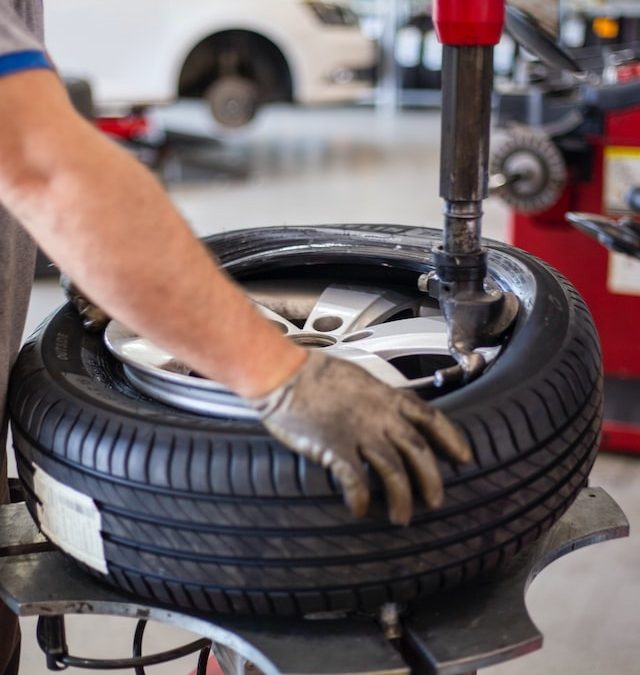Wheels are one of the most hard-working parts of a vehicle, yet many car owners overlook them when it comes to maintenance. Given how much work they do, it’s important to look after and replace your tires often, especially if you use the same tires throughout the year.
Replacing your tires should be done at least every six years, but no more than ten. However, you should check them often, as worn-out tires put you at high risk of harming yourself and other motorists.
So, if you’re wondering how to know the right time to replace your tires, where they can do it quickly, and what tire shops are the best, we’ve got you covered. This blog post looks at all you need to know about replacing your vehicle’s tires.
Why you need to replace your tires
There are several reasons why you need to replace your tire that goes beyond safety. Car parts are prone to wear and tear. It’s crucial to replace them periodically to get the best performance out of them.
Failing to replace your tires could lead to various problems, such as difficulty in braking and compromised road grip when you wear out tire tracks. It could also lead to tire blowouts, resulting in a car crash in the worst-case scenarios.
In addition to replacing your tires, it’s essential to frequently check your wheels for balancing problems and alignments. Driving a vehicle with poorly maintained tires can lead to premature wear and tear and a host of other expensive issues you could easily avoid.
What happens if you don’t?
Failing to replace your tires frequently can lead to the following problems.
Weathering. Frequently exposing tires to the elements, such as heat, ice, water etc., can damage them since manufacturers make tires out of organic materials prone to breaking down quickly. With frequent exposure to these elements, there’s no question they’ll begin to show the effects of being exposed so often after some time.
Some signs of weathered tires include cuts and cracks in the sidewall. You should take these signs of degradation seriously as it opens up the inside materials of the tire to damage.
Treadwear. Tire tread is essential for keeping your car from skidding or sliding off the wet pavement and providing traction. Tires wear out when they’ve exceeded their usable life. An ideal tread depth is between 9/32nds to 11/32nds of an inch. When a tire’s depth falls 2/32nds or less, it’s unsafe and worn out, and you should replace it immediately. You can use a thread depth gauge to measure your tires or do the penny test.
Vibration. Car owners risk having vibrations when driving on a smoothly paved road. Worn-out tires often lead to vibrations in the steering wheel. You may notice unusual vibrations as they drive, especially if the tires have worn down unevenly. Another thing that causes vibrations is when the wheels aren’t aligned properly.
Bulges and bubbles. Tires with a bulge indicate that the internal frame of your tires is damaged. This leads to air pressure or air pocket contorting the shape of the outer layers of a tire. Bulging can be caused by hitting a curb or impacting a pothole. It is best to replace tires with a bulge, or they could rupture while driving.
How often to visit a tire shop
You may be wondering whether a wheel repair shop and a tire repair shop are different. Most tire shops also offer wheel repair services so they’re called wheel repair shops in some countries outside of Canada. There are multiple reasons to visit a tire shop (more commonly known here as an auto body shop). Each reason may come with frequency, so there’s no hard and fast rule on how often you should visit a tire shop.
- When you notice any of the symptoms of a defective tire and tire damage, such as reduced traction, as we mentioned above. Most car owners know their vehicles like the backs of their hands, so as soon as you notice something’s off, visit the tire shop as quickly as possible.
- You should visit a tire shop at the start of a new season, especially if you live in areas with extreme weather conditions. If you live somewhere with heavy snowfall, it’s advisable to visit the tire shop at the start of winter to get snow tires with deeper tread.
- Some tire shops recommend changing your tires every six years if you don’t drive too often. Frequent drivers may need to replace their tires more often. These kinds of drivers can rely on mileage to know when to replace their tires. Visit the tire shop and get your tires changed every 40,250 to 80,500 kilometres.
What does a tire shop do?
Tire repair shops take care of the rims and wheels on car tires. Wheels are also subject to damage and wear and tear as they support tires, so maintaining them is crucial. They fix damages to the wheels that could affect the car’s performance and maintain the appearance of the wheels by removing scratches, dents and cracks, and other physical damage to the wheels.
In a tire shop, they provide full-service wheel repair, including wheel alignments and wheel balancing. While most of the work done in these shops is aesthetics, they maintain your car’s value and extend its lifespan, so they’re equally important.
Replacing your tires with Simplicity Car Care
Simplicity Auto Care has highly trained technicians if you’re interested in replacing or checking your tires. We’ll thoroughly inspect and diagnose the root cause of your tire damage and conduct repairs where needed. Our technicians are also well-versed in tire replacements and installations. Contact us today to book an appointment.


Recent Comments